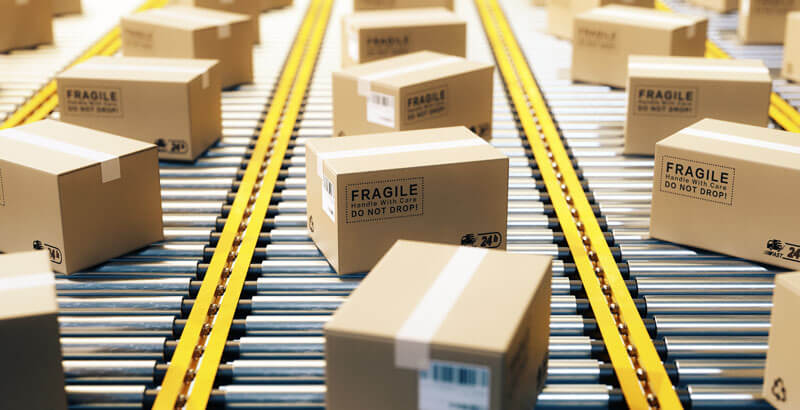
August 25, 2022
The Supply Chain: Guidelines for Ramping up Resilience
“Supply chain vulnerability has become an issue of great significance for many companies. The fact is that, as supply chains become more complex as a result of global sourcing and the continued trend to ‘leaning-down’, so supply chain risk increases,” explains Faizal Kassim, Operations Director at IPL Packaging. “The challenge to business today is to manage and mitigate that risk by building more resilience into these chains.”
“As we’re all too aware, packaging constraints are just one of many supply chain ‘wrinkles’ for companies as the pandemic, weather events and increased demand for sustainable materials have stressed supply,” he continues. “However, I strongly believe that what we experience as a global packaging supplier, can help to provide some insight into addressing the issues many of us as businesses now face.”
Several key factors stand out as overall guidelines for fostering greater supply chain strength amongst these are: creating end-to-end transparency, improving communication and collaboration, diversity in areas of design and distribution, and building and streamlining talent.
Creating end-to-end transparency
Many of today’s most pressing supply shortages (semiconductors, for example) can occur where manufacturers have little visibility. If a crisis on the scale of the pandemic occurs, the absence of a back stock of inventory or key materials can seriously threaten supply chains.
A comprehensive view of the supply chain is critical to identifying relationships that invite vulnerability. Without full transparency companies may not, in fact, recognise their reliance on suppliers or factories in shock-prone regions. In order to better achieve transparency, companies could prioritise materials and components by their importance to the business (and their products) and assess their vulnerability. Some potential measures to mitigate risk could include resetting inventory targets, keeping safety stocks, and using suppliers with a dynamic global supply network, whereby they source both globally and regionally.
A potential tactic to avoid building up excess inventory is simulating the effects of regional demand shifts on production. Examining the risks in supplier networks, labour, manufacturing, and logistics can help determine if any part of the value chain is exposed to internal or external disruptions and allow you to set up controls to minimise their effects, for example we were able to avert serious delays for our US customers by diverting our goods from the US West coast to East coast ports through monitoring the number of ships waiting to be berthed.

© linnworks.com
Improving communication and collaboration
With brands and retailers under increased pressure to keep shelves stocked and meet customer demands, consistent, two-way communication is ever more critical in maintaining strong relationships and quelling tensions early on.
As packaging suppliers, we continually emphasise this point when it comes to supply chain issues, but it can’t be stressed enough: Strong communication and collaboration with both suppliers, manufacturers and customers has, and will, help many businesses weather unforeseen storms.
Procurement managers can alleviate much pressure by working more closely with their packaging suppliers and other manufacturers, adding to supply chain resilience through briefing suppliers earlier and working with these suppliers to build in longer lead times. This can help to mitigate the chance of shipment delays or setbacks caused by material substitutions and the need to source alternative products. To minimise risks when sharing data with their suppliers, businesses could consider terms that require the disclosure of data under specific conditions.
Ultimately too, coordinating more effectively with packaging suppliers can also help procurement managers adjust their packaging order designs. It’s a very specific and clear example of where that communication can alleviate some of the issues and help the supply chain work a little bit better.
Diversity in design and distribution
As in the case of packaging, it can pay to be flexible; to optimise resilience, brands should be open to using alternative materials or components where these allow for a ‘plan B’ and don’t compromise on quality. For example, if a brand’s current packaging structure is locked in and constrained to specific materials and substrates, this could be a limiting factor that negatively affects timing.
A material or component shortage could result in fewer customer orders and lost sales if you can’t source critical materials or don’t have a proven alternative ready to go. This is certainly a sensitive area for marketers to think about when one considers the time and effort that goes into building a brand. Under supply chain duress it might be good to consider these options though.
This is why, as packaging suppliers, we’re spending significant development time and effort to research, test and verify a host of available and renewable materials and, in some cases, looking at completely flat-packable options that optimise space and minimise transport costs.
The same should apply to most all suppliers within the chain. For example, proactively building material alternatives into packaging designs will allow brands and suppliers to quickly alter or circumvent packaging shortage-related impacts on your supply chain. Design approaches should allow for an array of options to choose from. Similarly, the number and positioning of brand distribution facilities should also allow for diversification (rather than centralisation) and as well as ensuring suppliers are able to switch routes and/ or carriers in the event of disruptions at ports or in other key areas.
Take the ‘people’ factor personally
Much of the talent base within the consumer goods supply chain was not designed to operate in this new environment. Whether creating teams of data scientists and engineers or leveraging skills internally, building new capabilities is an urgent imperative. Brands could look to build cross-team efforts that ensure a more agile response to fast-moving events. Re-evaluating ‘just-in-time’ strategies will be key to integrating and streamlining operations.
Organisational responses could look to better prioritise issues that might range from assisting a team member, to testing financial implications under a range of scenarios. These could look at four categories: people, operating cadence, decision-enabling tools, and an ‘early-warning’ system, which could, for example, signal potential geo-political developments or threats, as well as compliance or regulatory issues.
The above would also enable suppliers to test ‘what if’ scenarios and then prioritise and mitigate the parts of the supply chain that fail most often. It may seem daunting to create a large number of scenarios nearly continuously, at varying levels of detail and impact, but that could successfully provide insights. The vulnerabilities it reveals may make a big difference to supply chain efficiencies.
Advanced technologies and digitisation
Whilst many suppliers and brands are reviewing and enhancing their processes, procedures and logistics in ways best suited to their own organisations, for behemoth global brands such as Amazon the new buzzword ‘hyperautomation’ comes in: Hyperautomation is an infrastructure of advanced technologies (including Artificial intelligence (AI) and Machine learning) used to scale automation capabilities in an organisation.
Amazon has adopted hyperautomation to aid in its massive logistics operations. This combination of different technologies enhances efficiency and transparency across the picking, packing, and shipping process. This type of logistical automation will become a reality for many global brands in the future.
Conclusion
By investing in supply-chain resilience now, organisations have an opportunity to build critical agility into their supply chains, which will help them withstand not only the current crisis, but also those to come.
While ‘just in time’ delivery worked when supply chains were ‘normal,’ they don’t work in the face of continued volatility. Suppliers and brands that simulate and plan for extreme supply-and-demand disruptions will succeed. This also means ordering materials and components earlier than usual, allowing extra time for delivery; accounting for the higher cost of energy, materials, and transportation; and checking inventories of critical materials should shortages occur. If logistics disruptions are likely, suppliers should have relationships in place that allow for capacity on alternative routes.
Finally, transparency may be hard to attain. Diversifying the supplier base, though critical for resilience, is expensive. And the cost of keeping stock on hand may be hard to justify – but the answers to resilience ARE there.
Companies that have thrived during these challenging times have seized upon new opportunities and behaviours caused by the fundamental global shifts. They’ve reacted quickly and nimbly to changes in preferences and are continuing to look ahead to identify future trends and mobilise their people and partners to action.
More articles

June 29, 2023
Unpack(ag)ing: Service in Today’s World

July 26, 2021
Challenge accepted! …Luxury brands CAN balance consumer preferences AND brand needs through packaging.

June 19, 2024
Dawn of Distinction – ‘The Beginning’ by Echlinville

April 20, 2021
Five Stars for the Three Rs

June 15, 2022
The Metaverse: A Virtual World offering Real Opportunity?

April 19, 2023
IPL Perspectives: Rex Wan & Amanda Comeau

January 18, 2021
What makes a good unboxing experience?

August 21, 2024

